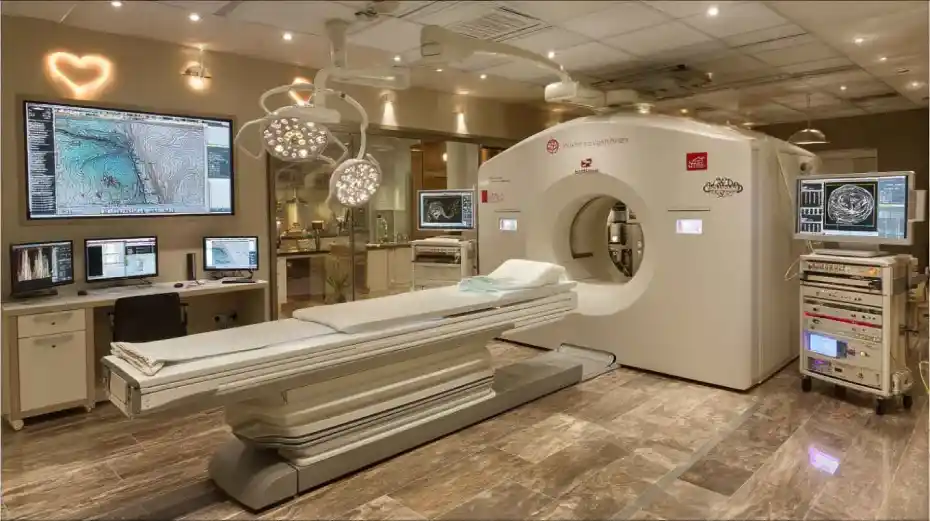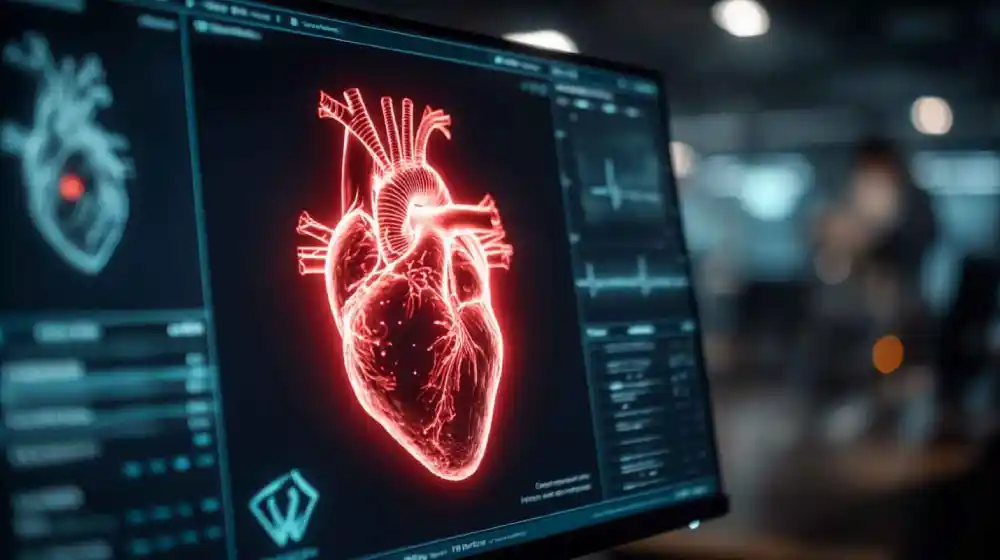Breaking Down Complex CHD Treatment: What Works Best in Modern Cardiology?

Congenital heart disease (CHD) affects nearly 1% of newborns worldwide, making it one of the most common birth defects. While medical advancements have dramatically improved survival rates, complex CHD remains a challenging condition requiring specialized care. This article breaks down the latest treatments, from groundbreaking surgeries to innovative medications, offering hope to families navigating this diagnosis. Whether you’re a parent seeking answers or a patient managing lifelong care, understanding these options can empower better decisions.
Drawing on decades of cardiology research and real-world clinical experience, we’ll explore how modern medicine tackles complex CHD. You’ll learn about cutting-edge diagnostics, life-saving procedures, and long-term management strategies – all explained in clear, relatable terms. By the end, you’ll have a clearer picture of what works best today and what the future holds for CHD treatment.
Understanding Complex Congenital Heart Disease (CHD)
Complex congenital heart disease (CHD) refers to severe structural heart defects present at birth, affecting blood flow and oxygen delivery. Unlike minor defects that may resolve on their own, complex CHD often requires surgical intervention or lifelong management. Conditions like Tetralogy of Fallot or Hypoplastic Left Heart Syndrome fall under this category, each posing unique challenges for patients and clinicians.
What Makes CHD “Complex”?
The term “complex” distinguishes these conditions from simpler defects, such as small holes in the heart. Complex CHD typically involves multiple abnormalities, like malformed valves, misplaced vessels, or underdeveloped heart chambers. Early diagnosis is critical – some cases are detected during prenatal ultrasounds, while others manifest after birth with symptoms like cyanosis (bluish skin) or feeding difficulties.
Risk Factors and Prevention
While the exact cause of CHD is often unknown, genetic factors, maternal diabetes, or infections during pregnancy can increase risks. Medications like Mildronate 500mg, though not a treatment for CHD itself, are sometimes studied for their potential role in improving cardiac metabolism in related conditions. However, CHD prevention primarily focuses on prenatal care, including avoiding alcohol and managing chronic illnesses.
- Genetic syndromes (e.g., Down syndrome) linked to higher CHD risk
- Maternal factors: uncontrolled diabetes, rubella infection
- Environmental exposures: smoking or certain medications during pregnancy
Understanding these factors helps families and healthcare providers tailor early interventions, improving outcomes for children with complex CHD.
The Evolution of CHD Treatment Over the Decades
The journey of congenital heart disease treatment has transformed from limited palliative options to sophisticated curative procedures. In the mid-20th century, most children with complex CHD didn’t survive infancy. Today, thanks to medical breakthroughs, about 90% reach adulthood – a testament to cardiology’s remarkable progress.
From Survival to Thriving
Early surgical attempts in the 1940s-50s focused on symptom management rather than cures. The development of heart-lung machines in the 1950s revolutionized open-heart surgery, enabling repairs of complex defects. Landmark procedures like the Fontan operation (1971) created new circulatory pathways for single-ventricle hearts, dramatically improving outcomes.
Technology’s Transformative Role
Modern imaging techniques allow surgeons to visualize defects in 3D before operating. Hybrid procedures combining surgery and catheterization minimize trauma, while fetal interventions can now correct some defects in utero. These advances have reduced complications and recovery times significantly.
- 1944: First successful CHD surgery (Blalock-Taussig shunt)
- 1953: First open-heart surgery using cardiopulmonary bypass
- 1980s: Introduction of balloon valvuloplasty
- 2000s: Rise of minimally invasive techniques
This evolution continues as researchers explore regenerative medicine and personalized approaches, promising even better outcomes for future generations.

Modern Diagnostic Tools for CHD
Accurate diagnosis forms the cornerstone of effective CHD management. Today’s cardiologists have an impressive arsenal of imaging technologies that provide detailed views of heart structures without invasive procedures. These tools allow for earlier detection and more precise treatment planning than ever before.
Advanced Imaging Breakthroughs
Fetal echocardiography can now detect heart defects as early as 18 weeks into pregnancy, giving families time to prepare. For newborns, 3D echocardiography provides real-time, high-resolution images of beating hearts, while cardiac MRI offers unparalleled soft tissue visualization for complex cases. CT angiography has become invaluable for evaluating blood vessel abnormalities.
Genetic Testing and Beyond
With about 30% of CHD cases having genetic components, chromosomal microarray analysis and whole exome sequencing help identify syndromes associated with heart defects. Pulse oximetry screening, now standard for newborns, catches critical CHD that might otherwise be missed in seemingly healthy babies.
- Fetal echocardiography for prenatal diagnosis
- 3D echocardiography for precise anatomical assessment
- Cardiac MRI for complex defect evaluation
- Pulse oximetry for newborn screening
These diagnostic advances, combined with artificial intelligence-assisted analysis, are revolutionizing how we detect and understand congenital heart disease, leading to better outcomes at every stage of life.
Surgical Interventions: Current Best Practices
Modern cardiac surgery for complex CHD has evolved into a precise science with dramatically improved outcomes. Today’s procedures focus not just on survival but on optimizing long-term quality of life. The field has shifted from one-size-fits-all approaches to personalized surgical plans tailored to each patient’s unique anatomy.
Minimally Invasive Revolution
Many centres now prefer smaller incisions and video-assisted techniques when possible. These approaches reduce trauma, speed recovery, and minimize scarring. For certain defects, hybrid procedures combine surgical and catheter-based techniques in a single operation, offering the benefits of both worlds.
Timing and Staging Matters
Surgeons carefully plan intervention timing based on the child’s development. Some procedures, like the Norwood operation for HLHS, are done in the first week of life, while others can wait months or years. Three-stage palliation approaches have transformed outcomes for single-ventricle patients.
- Neonatal arterial switch operations for TGA
- Valve-sparing techniques to preserve native tissue
- 3D-printed heart models for surgical planning
- Extracorporeal membrane oxygenation (ECMO) support
With mortality rates for complex CHD surgery now below 5% at leading centres, the focus has shifted to improving neurodevelopmental outcomes and reducing long-term complications through refined techniques.
Non-Surgical Treatments and Medications
While surgery remains crucial for many CHD cases, modern cardiology offers an expanding array of non-surgical options. These treatments help manage symptoms, delay interventions, or serve as alternatives for patients who can’t undergo surgery. Medication protocols have become increasingly sophisticated, targeting specific physiological challenges in CHD.
Medication Management Strategies
Pharmacologic therapies play a vital role in stabilizing patients before surgery and maintaining heart function afterwards. Diuretics reduce fluid overload, while beta-blockers help control arrhythmias. Newer medications like pulmonary vasodilators have transformed care for patients with Eisenmenger syndrome, significantly improving quality of life.
Catheter-Based Interventions
Cardiac catheterization has evolved beyond diagnostics to offer therapeutic solutions. Procedures like device closures for septal defects or balloon valvuloplasty for stenotic valves often provide complete corrections without open-heart surgery. These techniques are particularly valuable for high-risk patients.
- Prostaglandin E1 to maintain ductal patency in neonates
- ACE inhibitors for ventricular dysfunction
- Transcatheter pulmonary valve replacements
- Anticoagulants for Fontan circulation patients
These non-surgical approaches, combined with careful monitoring, allow many CHD patients to avoid or postpone major operations while maintaining good cardiac function.
Long-Term Management of CHD
With improved survival rates, long-term CHD management has become a critical focus in cardiology. Patients now routinely live into adulthood, requiring specialized care that evolves with their changing needs. This lifelong approach addresses both cardiac health and overall well-being.
Transitioning to Adult Care
The shift from pediatric to adult cardiology presents unique challenges. Dedicated transition programs help adolescents understand their condition while teaching self-management skills. These programs reduce gaps in care and prepare patients to take responsibility for their heart health.
Monitoring for Late Complications
Regular follow-ups are essential to detect potential issues like arrhythmias, heart failure, or valve dysfunction. Advanced imaging and stress testing help identify problems before symptoms appear. Many centres now offer specialized adult CHD clinics with multidisciplinary teams.
- Annual cardiac evaluations for stable patients
- Exercise stress testing to assess functional capacity
- Pregnancy counselling for women with CHD
- Neurodevelopmental assessments for childhood survivors
Comprehensive care plans now incorporate mental health support, exercise guidance, and lifestyle counselling to optimize quality of life throughout adulthood.

Cutting-Edge Research and Future Directions
The frontier of CHD treatment is advancing at an unprecedented pace, with groundbreaking research offering hope for even better outcomes. Scientists are moving beyond structural repairs to explore biological solutions that could revolutionize how we treat congenital heart defects.
Regenerative Medicine Breakthroughs
Stem cell therapy and tissue engineering are showing promise for growing living heart valves and patches. Researchers are developing bioengineered scaffolds that can integrate with a child’s growing heart, potentially eliminating the need for repeated surgeries as patients age.
Precision Medicine Approaches
Genetic mapping and AI-powered analysis are enabling personalized treatment plans based on a patient’s unique genetic profile. Clinical trials are investigating targeted therapies that could prevent or mitigate CHD complications before they develop.
- 3D bioprinting of patient-specific heart tissues
- Gene editing techniques to correct mutations in utero
- Wearable technology for continuous cardiac monitoring
- Nanotechnology for targeted drug delivery
These innovations, combined with international research collaborations, are paving the way for a future where CHD may be preventable or curable rather than just manageable.
Navigating Life with CHD: A Patient-Centered Approach
Living with congenital heart disease requires more than medical interventions – it demands a holistic support system. Today’s care models emphasize empowering patients to lead fulfilling lives while managing their cardiac health. This approach recognizes the emotional and practical challenges that accompany CHD across the lifespan.
Building Your Healthcare Team
Optimal CHD care involves coordinating specialists from cardiology, primary care, mental health, and other fields. Many centres now offer navigators who help patients transition between pediatric and adult care while ensuring no critical follow-ups are missed.
Thriving Beyond Survival
Modern rehabilitation programs focus on helping CHD patients achieve their personal goals, whether that’s playing sports, starting a family, or pursuing careers. Cardiac-specific exercise regimens and nutrition plans help maintain cardiovascular health without unnecessary restrictions.
- Mental health counselling for anxiety/depression management
- Peer support groups connecting patients across ages
- Educational resources for schools and employers
- Advance care planning for complex cases
This patient-centered approach helps individuals with CHD live not just longer but better by addressing the whole person—not just the heart defect.
Author bio: Michele Schaefer, MD – Board-certified psychiatrist specializing in adult psychiatry (16+ years). Expertise in depression, anxiety, and OCD, using medication management, supportive therapy, and CBT. Education: University of Nebraska (MD), OHSU (residency), Yale (forensic psychiatry fellowship). Combines clinical practice with mental health writing for Medixlife.com. Patient-centered, collaborative approach.